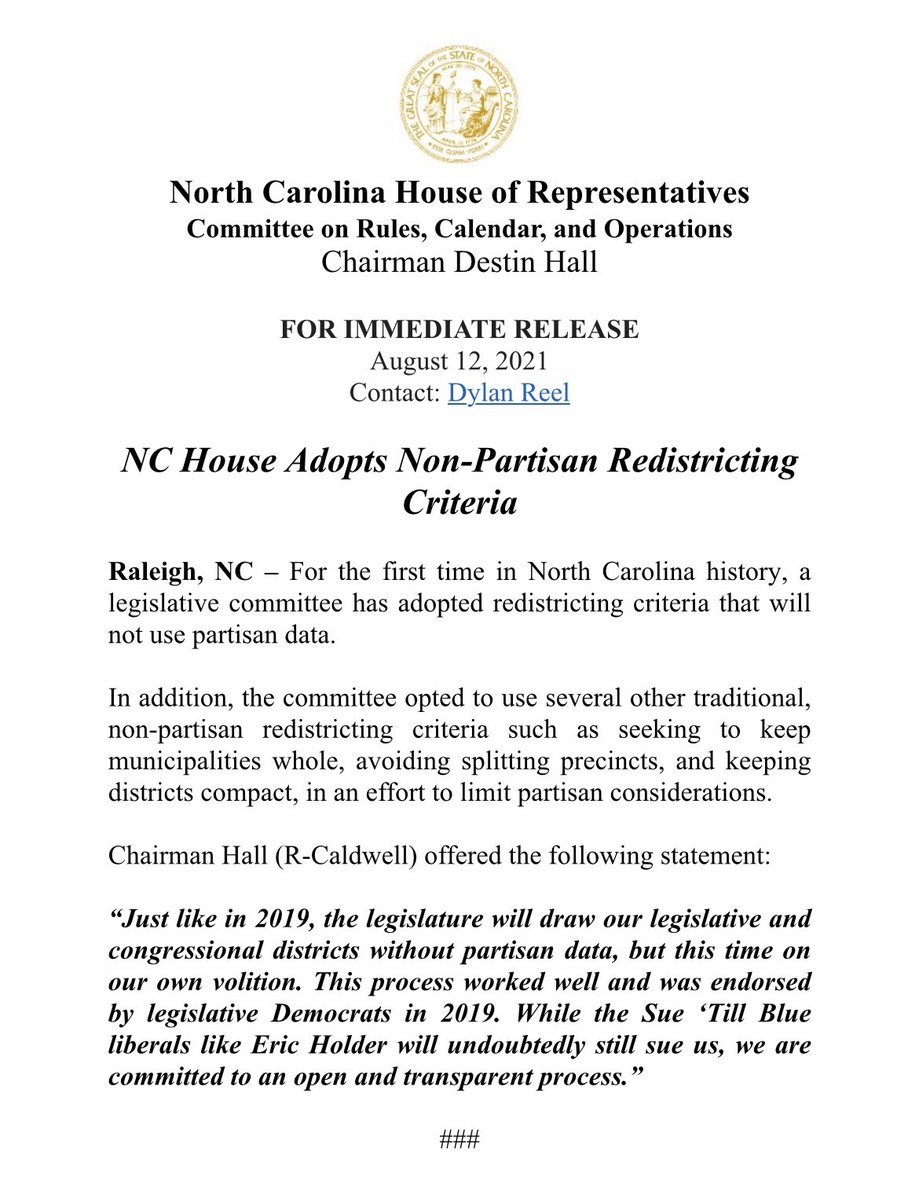North Carolina
Related: About this forumNorth Carolina adopts non-partisan redistricting rules
Link to tweet

Hattip to LetMyPeopleVote
https://www.democraticunderground.com/100215736342
❤
PortTack
(35,810 posts)littlemissmartypants
(31,507 posts)The prospect makes me really happy.
![]()
Bernardo de La Paz
(60,320 posts)moose65
(3,438 posts)I don’t trust these asses in the NC General Assembly. They have had power for 10 years and won’t give it up easily.
Fiendish Thingy
(21,906 posts)This is different from the requirements in the For The People Act, which require nonpartisan committees of non-legislators to draw districts under strict guidelines.
blm
(114,415 posts)They have the data memorized by now.
This is a public relations ploy designed to get the headlines they want and maximum attention by also attacking Holder and Dems.
Fiendish Thingy
(21,906 posts)FBaggins
(28,619 posts)If you look at who the tweet comes from, it's pretty clear that this is just an attempt to proactively keep the state surpreme court at bay. "Not only are we not using race to draw these lines... we're not even going to look at partisan data".
In fact, while the rules were being drawn up, there were Democrats insisting that race must be included. They were voted down.
Foolacious
(540 posts)I've developed my own software but more recently use a publicly-available system. Here's something I've noted:
If I do NOT take account of partisan (Democratic/Republican) data, but simply create compact districts of equal size that follow existing precinct and, to the extent possible, county boundaries, then the maps I make are almost invariably "auto-gerrymandered" in favor of Republicans, by which I mean that they receive a higher proportion of safe and likely seats than their proportion of the state population.
One reason for this is that Democrats tend to live in more densely populated areas, so they end up in a few districts that are 70%, 80%, even 90% Democratic, while Republicans end up in a larger number of districts that are 55% to 60% Republican.
But even if I do try to redistribute precincts into districts with an eye to correcting this partisan imbalance, it can still be difficult to achieve good proportionality. This is because the precincts in more densely populated areas are frequently five or ten times as populous as rural ones and frequently "interlock" with each other (where one precinct contains "outposts" of another precinct) so they tend to get automatically lumped together no matter what. Now, why are precincts in Democratic areas larger, and why are they interlocked? I can see no good reason for it, but it seems to happen in many if not most states.